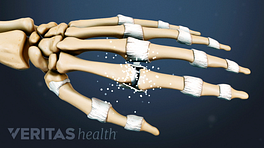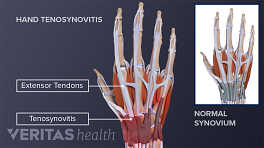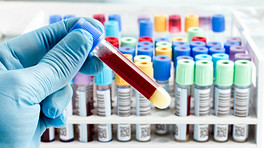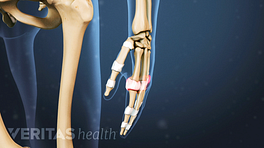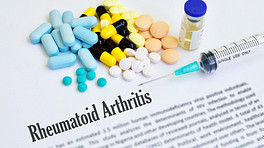Rheumatoid arthritis is a chronic inflammatory disease that typically causes significant pain, swelling, stiffness, and deformity in joints.
Symptoms are often most significant in the body’s smallest joints, such as the metacarpophalangeal joints where the fingers meet the hands, and the metatarsophalangeal joints where the toes meet the feet.
The disease process specifically attacks the lining of the joints, called the synovium.
The synovium is a thin membrane located within the thicker and more fibrous articular capsule, a flexible sleeve of tissue that surrounds the space between two or more bones that form a joint.
The synovium produces synovial fluid, a thin, clear, viscous substance that bathes and lubricates joints.
In rheumatoid arthritis, the body mistakenly sends white blood cells to attack the synovium, causing an inflammatory response.
Rheumatoid arthritis generally progresses in four distinct phases.
In the first phase, the synovium reacts to invading white blood cells, or leukocytes, by adding layers of new cells at a rapid pace.
The new cells may cause the normally smooth synovium to develop a rough, grooved surface.
Excess synovial fluid also gathers, causing the affected joint to swell.
This inflammatory response often makes the joint warm to the touch. Skin over the joint may turn red.
In the second phase of rheumatoid arthritis, the synovium continues to thicken, and new, abnormal tissue called pannus forms over the ends of the joint's bone surfaces.
In the third phase, the pannus releases enzymes called lysosomes that can damage and sometimes completely destroy the surrounding cartilage, bone, and soft joint tissue.
The space between the bone narrows, and joint alignment may be permanently altered, resulting in deformity.
In the fourth phase of rheumatoid arthritis, after cartilage is lost, inflammation may spread to the surrounding tendons and the articular capsule, making it difficult or impossible to move the affected joint.
Other symptoms of rheumatoid arthritis can include hard lumps underneath the skin, called rheumatoid nodules. These most commonly appear on or near the hands and elbows.
Rheumatoid arthritis symptoms can occur in joints throughout the body, such as the knees, ankles, hips, elbows, and shoulders, as well as cause other symptoms such as fever and fatigue.

